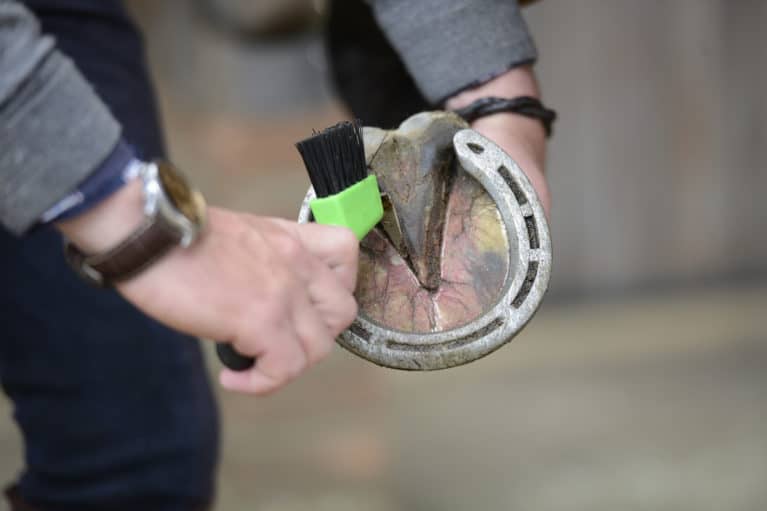Many horses have had thrush at some point in their lives and, for some, it’s a persistent problem that just won’t stay away. Vet Jane White explains what causes this unpleasant condition and how you can prevent it

Thrush is a common, destructive infection that affects the frog, particularly the central sulci (or cleft) in the middle of the base of the frog and the grooves between the frog and sole. The condition is characterised by a really unpleasant smell with a thick, black, gungy discharge, which is actually dead keratin tissue. The hind feet are more commonly affected than the front feet, which is probably because of their more pointed shape. Thrush can affect all ages, breeds and genders.
Historically, thrush was thought to be associated with poor stable management, with horses living in unhygienic conditions. But while standing in dirty, urine-soaked bedding or manure-laden mud provides the perfect breeding ground for bacteria, this isn’t the whole picture.
We’ve all seen our horses canter across the field with clods of mud flying out of their feet. This is part of your horse’s natural hoof-cleaning mechanism. As he moves, his hoof changes shape when it bears weight. It’s more elastic in the heel area than at the toes or quarters, so when it’s loaded the heel expands and sinks backwards. The sole loses its concave shape and flattens, and the frog continues to expand with the sole until, in the unshod hoof, it makes contact with the ground. This expansion and contraction of the hoof during loading and unloading of the limb helps to shift the debris that has accumulated in it.
In a well-shod hoof, the shoe may not affect this mechanism much, but it’s important to remember that anything that affects the normal biomechanics of the hoof capsule may contribute to debris accumulating in it, which will allow bacteria to multiply. A good example of this is a horse who has deep clefts associated with contracted heels. This makes it easier for more debris to accumulate and it’s more difficult to dislodge it. Prolonged periods of inactivity or confinement to small turnout areas will also reduce the efficiency of the hoof’s natural self-cleaning mechanism. This may explain why some horses kept in poor conditions never contract thrush, while others in immaculate conditions do.
Other contributing factors include the use of wide web shoes and heart bar shoes or the fitting of pads, where natural ventilation is reduced. Some farriers advocate the use of an antibacterial dressing under these to help reduce the chances of thrush occurring. One research group has also suggested that there may be a link between high-sugar and starch diets and thrush. On a practical level, ponies with laminitis may have poor hoof conformation and horn quality as a result of the condition, but keeping them on a low-sugar, low-starch diet may be beneficial for controlling thrush as well as preventing further attacks of laminitis.
To find out what you can do to treat and prevent thrush, get your copy of December Horse&Rider, on sale 20 October.















